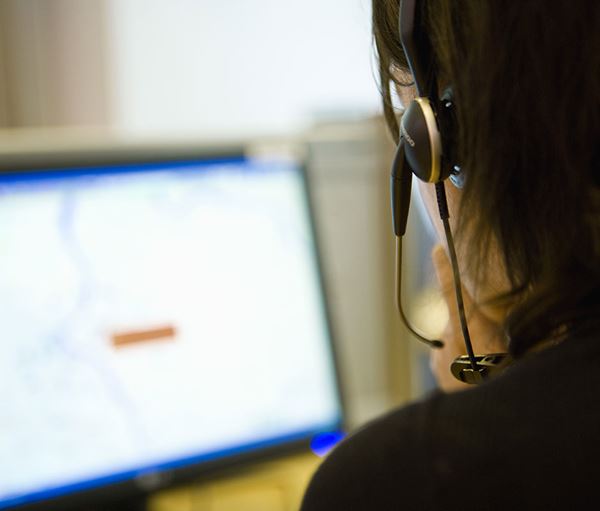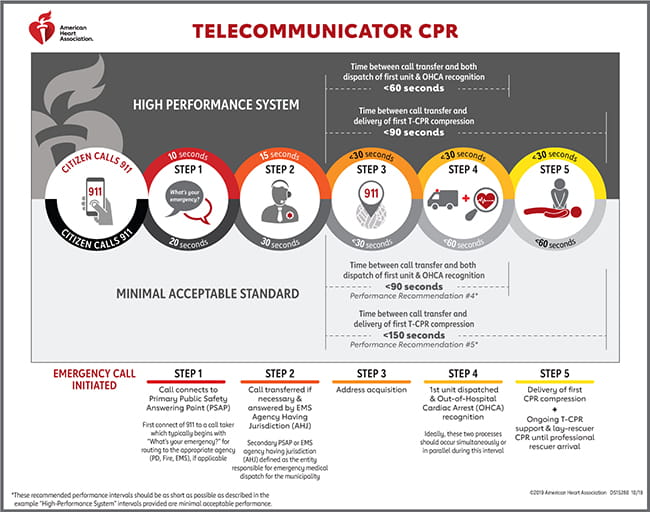Telecommunicator CPR (T-CPR)
Each year an estimated 350,000 sudden cardiac arrest (SCA) events occur in the United States in an out-of-hospital environment. Almost all of these events result in a call for help to 911. Without quick intervention in the form of cardiopulmonary resuscitation (CPR) and defibrillation, death from SCA is certain.
Telecommunicators are the true first responders and a critical link in the cardiac arrest chain of survival; a telecommunicator can make the difference between life and death.

Is your team operating within High-Performance Standards?

A Word from our Chairman
PSAP Recommendations
T-CPR Resources
Significance of the T-CPR Program
Given that 350,000 sudden cardiac arrest events happen in the US each year, it is unfortunate how low overall survival rates are. Furthermore, survival varies considerably between communities. Many communities report survival (from witnessed ventricular fibrillation) in the single digits, a few report survival as high as 50% (or higher).
One critical intervention strongly associated with survival is cardiopulmonary resuscitation (CPR) started by a bystander. When CPR begins prior to the arrival of emergency medical services (EMS) personnel, the person in cardiac arrest has a two to three-fold higher likelihood of survival. An effective way to ensure that CPR is provided quickly is for the emergency telecommunicators to provide instant instructions with telecommunicator CPR (T-CPR). T-CPR allows bystander CPR to begin – it works by keeping the brain and heart alive until EMS arrives to provide defibrillation and other vital interventions. T-CPR can assist the untrained caller as well as remind the CPR trained caller how to provide high-quality CPR.
Simply put, T-CPR saves lives. Look at any highly performing EMS system and you will find a community committed to providing high-quality T-CPR. National organizations, such as the American Heart Association (AHA) and the Institute of Medicine (IOM) strongly endorse T-CPR. These organizations recognize the need for specific training in how to recognize cardiac arrest over the phone and how to rapidly provide quality instructions as well as the need for a robust and ongoing quality improvement program.
The AHA convened an expert panel of EMS telecommunicators, emergency communication trainers, medical directors of EMS programs, and EMS researchers to provide program and performance recommendations for T-CPR. These 6 specific program recommendations and 5 specific performance recommendations are endorsed by the AHA and offered as beacons for emergency telecommunications centers to embrace and implement within their organization.
Implementing a quality program in T-CPR and achieving adherence to the performance standards will undoubtedly save countless lives. We acknowledge that these standards will not be achieved overnight. Indeed, they will require unwavering attention and an organizational commitment to doing everything possible to give someone in cardiac arrest a chance to return to their family and loved ones. It is a truism that it takes a system to save a victim of SCAs. Emergency telecommunications centers are a vital part of a lifesaving system.
 Login
Login